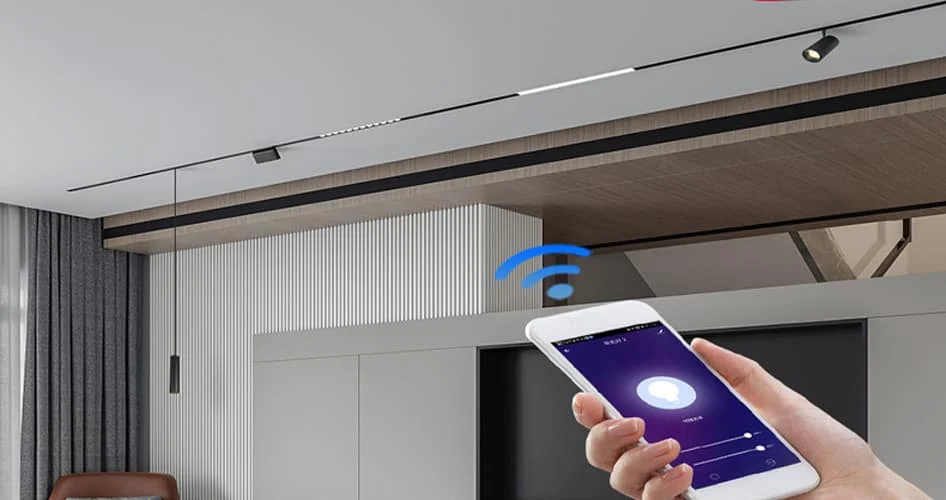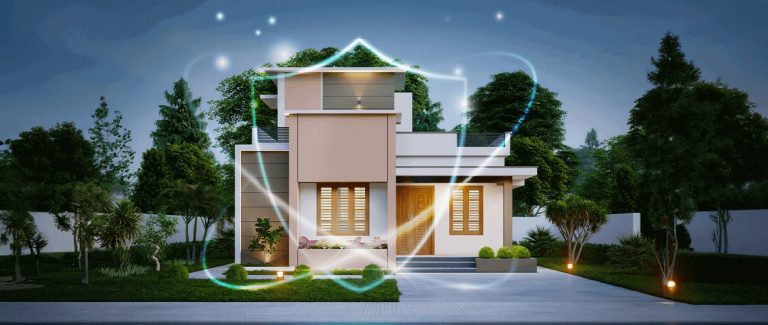
The concept of smart homes has evolved from a distant dream to a tangible reality, enhancing the way we interact with our living spaces. As technology continues to advance, lighting has become one of the most exciting and accessible features within a smart home setup. Smart lighting offers a world of possibilities that extend far beyond simple on-and-off functionality, allowing for enhanced control, energy efficiency, and customization to fit your lifestyle.
If you’re new to the idea of smart lighting and looking to create a more intelligent, sustainable home, this guide is designed to help you navigate the world of smart lighting. From understanding the basics of smart bulbs to discovering the latest innovations, we will walk you through everything you need to know to integrate smart lighting into your home.
What is Smart Lighting?
At its core, smart lighting refers to lighting systems that can be controlled remotely or automatically through connected devices. Unlike traditional light bulbs, smart lights can be controlled using a smartphone app, voice commands, or even automated routines based on your schedule and preferences. Smart lighting goes beyond basic functionality, offering features such as color-changing bulbs, adjustable brightness, and integration with other smart home systems.
The beauty of smart lighting lies in its versatility. It can be customized to suit different moods, occasions, or times of day, making it a powerful tool for both convenience and ambiance. Whether you’re looking to brighten up your home with an energizing morning light or set a cozy atmosphere for an evening of relaxation, smart lighting can adapt to your needs.
The Components of a Smart Lighting System
To get started with smart lighting, you’ll need a few essential components. Here’s a breakdown of the key elements that make up a typical smart lighting system:
-
Smart Bulbs: These are the heart of your system. Smart bulbs can be screwed into existing light fixtures, and they’re available in various styles, including standard bulbs, LED strips, and specialty lamps. Popular brands like Philips Hue, LIFX, and Sengled offer a wide range of smart bulbs that can be controlled via apps or voice commands. Most smart bulbs allow you to adjust brightness, change colors, and set schedules.
-
Smart Switches: If you prefer controlling your lighting with traditional wall switches, smart switches are a great alternative. These replace standard light switches and enable you to control lighting through voice commands or an app. Some models also allow you to adjust the brightness and set schedules.
-
Smart Plugs: For lamps or lighting fixtures that use traditional bulbs, smart plugs can be a convenient solution. By plugging your lamp into a smart plug, you can turn the lamp on and off using your smartphone or voice assistant. Smart plugs are an affordable and easy way to make existing lighting smarter without replacing the entire bulb or fixture.
-
Hub or Bridge: Many smart lighting systems require a hub or bridge to connect to your home’s Wi-Fi network. This central device helps control and synchronize all of your smart bulbs and switches, allowing them to communicate with one another. For example, the Philips Hue Bridge connects to your Wi-Fi router and enables you to control your Hue bulbs remotely.
-
Voice Assistants: Most smart lighting systems integrate with voice assistants like Amazon Alexa, Google Assistant, or Apple Siri. This means you can control your lights using simple voice commands, such as “Hey Siri, turn off the living room lights” or “Alexa, dim the bedroom lights to 50%.”
Setting Up Your Smart Lighting System
Once you’ve chosen the right smart lighting products for your home, setting them up is relatively simple. Here’s a step-by-step guide to getting started:
-
Install the Bulbs or Switches: Begin by replacing your traditional bulbs with smart bulbs or installing smart switches in place of your old wall switches. Ensure that the bulbs are properly connected to their respective fixtures.
-
Download the App: Each smart lighting brand typically offers its own mobile app, which allows you to control and customize your lights. Download the app associated with your smart bulbs or switches (for example, the Philips Hue app for Hue bulbs or the LIFX app for LIFX bulbs).
-
Connect to Wi-Fi: Follow the instructions provided by the manufacturer to connect your smart lights to your home Wi-Fi network. This process may involve scanning QR codes or entering network credentials. For systems that require a hub, connect the hub to your router first.
-
Pair with Voice Assistants: If you’re using a voice assistant, you’ll need to link your smart lighting system to the assistant’s app (e.g., Amazon Alexa, Google Home). This allows you to control the lights via voice commands.
-
Customize Your Lighting: Once everything is set up, explore the various features of your smart lights. You can adjust brightness levels, change colors, and create lighting scenes for different occasions (e.g., a warm, relaxing light for evening reading or a bright, cool light for morning tasks). Many apps also allow you to set timers or schedules, so your lights turn on or off automatically at certain times of day.
Key Benefits of Smart Lighting
The appeal of smart lighting goes beyond just the convenience of remote control. Here are some of the top benefits that make it an excellent investment for any modern home:
-
Energy Efficiency: One of the most significant advantages of smart lighting is its energy efficiency. LED smart bulbs consume far less energy than traditional incandescent bulbs. In addition, features like dimming and scheduling help ensure that lights are only used when needed, reducing electricity waste. For example, you can set your lights to turn off automatically when you leave the house, ensuring they’re never left on unnecessarily.
-
Customization and Ambiance: With smart lighting, you can easily create different atmospheres in your home. Whether you’re hosting a dinner party or winding down for the night, you can adjust your lighting to match the mood. Many smart bulbs also allow you to choose from millions of colors, allowing for endless possibilities in terms of ambiance.
-
Convenience: The ability to control your lights remotely or through voice commands adds a layer of convenience that can significantly improve your daily routine. Forget about fumbling for the light switch when your hands are full—simply ask your voice assistant to turn on the lights, or use the app to adjust settings from anywhere in your home.
-
Increased Home Security: Smart lighting can also play a role in home security. By setting your lights on a schedule or using motion detectors, you can give the appearance that someone is home even when you’re away. For example, you can program your lights to turn on automatically at sunset and off at bedtime, deterring potential intruders.
-
Automation: With automation, you can program your lights to respond to specific events or actions. For instance, you can set your hallway lights to automatically turn on when you open the door or have the bedroom lights dim when you watch TV. The possibilities for automating lighting based on your needs are endless, making everyday life more streamlined and efficient.
Smart Lighting Trends and Innovations
As the smart home market continues to grow, there are several exciting trends and innovations in smart lighting to keep an eye on:
-
Human-Centric Lighting: Some smart lighting systems now offer dynamic lighting that adjusts throughout the day to mimic natural light patterns. This type of lighting, known as human-centric or circadian lighting, has been shown to improve sleep quality, productivity, and overall well-being by syncing with the body’s internal clock.
-
Integration with Other Smart Devices: As smart homes become more interconnected, lighting systems are increasingly being integrated with other devices, such as smart thermostats, security cameras, and voice assistants. For example, your lights can now work in tandem with your thermostat to adjust the ambiance based on the temperature, or they can be linked to your security system to flash when an intruder is detected.
-
RGB and Tunable White Bulbs: The availability of RGB bulbs, which can produce millions of colors, has become a popular trend for creating unique lighting effects in the home. Additionally, tunable white bulbs allow you to adjust the color temperature of the light, helping you create the ideal setting for any activity or time of day.
Conclusion
Smart lighting is one of the most accessible and impactful ways to upgrade your home with automation and technology. Whether you want to increase energy efficiency, enhance ambiance, or improve convenience, smart lighting offers endless possibilities for customization. As you begin your smart home journey, remember that the right lighting setup can transform your living space, making it more functional, comfortable, and energy-efficient. By understanding the components of a smart lighting system and exploring the many benefits it offers, you can create a home that’s not only smarter but also more sustainable and enjoyable to live in.
You May Also Like
Expert Insights on Installin ...
28 October 2025
How to Improve Your Home wit ...
03 April 2025
Top 10 Tech Tips for a Bette ...
04 December 2024
Popular Post
Expert Insights on Installing Solar Power Systems
28 October 2025Local Plumbing Expertise You Can Trust in Killeen
22 August 2025Innovative Solutions for Refurbishing Commercial Spaces
14 August 2025How to Improve Your Home with Valuation and Agents
30 April 2025Recent Posts
- Expert Insights on Installing Solar Power Systems October 28, 2025
- Local Plumbing Expertise You Can Trust in Killeen August 22, 2025
- Innovative Solutions for Refurbishing Commercial Spaces August 14, 2025
- How to Improve Your Home with Valuation and Agents April 30, 2025
- The Beginner’s Guide to Design in Home Improvement April 24, 2025
- How to Improve Your Home with Maintenance and Repair April 16, 2025
- Why Your Roofing Strategy Needs a Flat Roof April 10, 2025
Archives
- October 2025 (1)
- August 2025 (2)
- April 2025 (10)
- March 2025 (2)
- February 2025 (7)
- January 2025 (8)
- December 2024 (6)
- November 2024 (6)
- October 2024 (6)
- September 2024 (5)
Categories
- Cleaning & Maintenance (5)
- Gardening & Outdoor (5)
- Home Decor (5)
- Home Improvement (5)
- HVAC (5)
- Moving (5)
- Plumbing (6)
- Real Estate & Property (5)
- Roofing (6)
- Smart Home (6)





